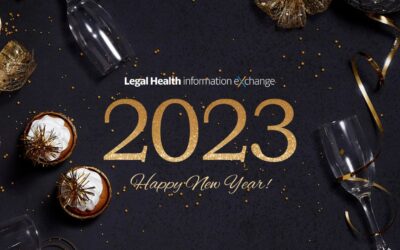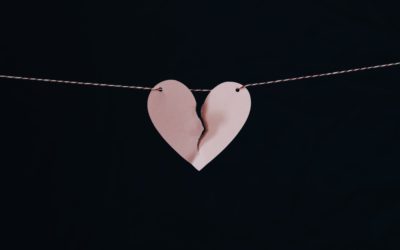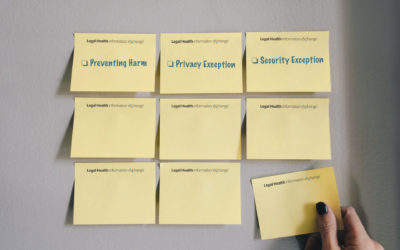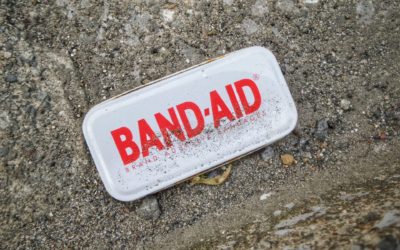HAPPY NEW YEAR! A LOT will be happening in 2023!
The New Year is finally here, and I believe that there will be a LOT going on in 2023! Here are just a few of the things that Legal HIE is looking to stay on top of for our readers this year . . .
Are We Getting Closer to Alignment of 42 CFR Part 2 & HIPAA?
SAMHSA finally fulfilled its duty under the CARES Act & releases a Proposed Rule “Confidentiality of Substance Use Disorder (SUD) Patient Records” amending the Part 2 rules in line with the CARES Act’s requirements. This is the 4th overhaul of the Part 2 Rule in 5 years…
Information Blocking is No Longer Limited to USCDI
Today, the Information Blocking spigot has officially opened. The Content & Manner Exception no longer applies; now, all electronic health information (EHI) cannot “blocked” if requested (unless another exception applies).
Summary List Update of COVID19-related Federal Actions Relevant to Healthcare
As efforts at the federal and individual states level evolve every day at almost a breakneck pace to address challenges and needs related to the COVID-19 outbreak, here is a updated running list of some of the top actions taken at the federal level that we thought would be helpful to the healthcare industry (Caveat, this is not an exhaustive list):
CMS Releases Hospital COP Event Notification FAQs; Interpretive Guidance
On May 1, modifications to the Medicare Conditions of Participation (“CoPs”) went into effect, requiring certain electronic event notifications for admissions, discharges and transfers (“ADTs”) to and from hospitals, critical access hospitals and psychiatric hospitals. To provide guidance to hospitals and state surveyors, CMS released several FAQs as well as interpretive guidance last week to be published in the State Operations Manual.
Hospitals are required to make a “reasonable effort” to ensure that notifications are sent to post-acute care services providers and suppliers, and other practitioners and entities, which need such notifications for treatment, care coordination or quality improvement. Under the new CoP, ADT notifications must be sent for all emergency department and inpatient patients where the hospital, critical access hospital or psychiatric hospital maintains an electronic medical record or administrative system.
When Does a Health Care Provider Wear an HIE/HIN Hat for Purposes of the Info Blocking Rule?
Under the Information Blocking Rule (IBR), a health information network (HIN) or health information exchange (HIE) type actor is one that “determines,” “controls,” or has the “discretion to administer” access, exchange or use of EHI between two or more unaffiliated entities. ONC has said that a separate entity is not necessary to trigger the IBR HIN/HIE definition of an Actor. Additionally, ONC has specifically pointed out that a health care system, for example, could wear two IBR actor hats: (1) as a health care provider, and (2) as a HIN/HIE.
What Information Must be Made Available on Patient Portals?
Well folks, the Information Blocking Rule (IBR) April 5th compliance deadline is behind us at this point. However, I know that many of you are continuing to work through your top IBR challenges and questions one at a time. At this point, I have worked through many thorny IBR issues with numerous health care providers and health information exchanges (HIE), so I thought it might be interesting for me to share what is the main topic that I see Actors are focused on. And the winner is …..
Information Blocking Compliance — So What Happens on April 5th?
The deadline for compliance with the Information Blocking Rule is just 12 days away! I am certain that all the Actors are working feverishly and diligently to come into compliance with these new requirements by this fast-approaching date. On the bright side, I suppose that we can all be relieved that ONC did not stick with its original deadline date of November 2, 2020. However, even with the extra time Actors may still be scrambling to get all of their ducks in a row by April 5, 2021. So, what are the actual consequences if everything is not “buttoned-up” in time?
NEW ONC FAQ: Prior Agreements or Contracts CAN Implicate Information Blocking as of April 5th!
On and after April 5, 2021, any actor’s agreements, arrangements, or contracts are subject to and may implicate the Information Blocking Rule. The Communications Condition of Certification (CCOC) requirements must be revised to remove or void the contractual provision that contravenes the CCOC requirements whenever the contract is next modified for any reason. A Business Associate Agreement should generally not prohibit or limit the access, exchange, or use of the EHI for treatment.
How to Use the Privacy Exception to Deny an Abuser Access to EHI
When an Actor wants to potentially deny access of EHI to a person who is suspected of some type of abuse of the individual (the “Abuser”) whose EHI is being sought, the natural inclination is want to look to the Information Blocking (IB) Rule’s Preventing Harm Exception to justify such denial. However, the IB Rule’s Privacy Exception offers additional options and, in certain ways, more flexibility for the Actor to deny a suspected Abuser’s request for EHI.
Checklist for Info Blocking Compliance
Over the last few weeks, I have come across a number of health care provider organizations that are under the incorrect assumption or belief that their EMR vendor is “taking care of” all that needs to be done in order for the provider to comply with Information Blocking. This is false. There are operational decisions and other process issues that must be addressed and can only be implemented by the Actor. Every health health care provider that meets the definition of an “Actor” should be taking active steps towards getting their organization positioned to comply with Information Blocking by April 5, 2021. Where should you start? I propose using a checklist as a simple starting point to begin “ticking off” your Information Blocking “to do” list . . .
Threading the HIPAA Needle through Information Blocking to Block Patient Access when Data is Corrupted
The Information Blocking (IB) Rule is intended to work in sync with HIPAA, including the “right of access” the Privacy Rule grants to patients with regard to access to their own protected health information (PHI). However, as I continue to analyze how to implement various standards that overlap between these two regulations, questions about how to thread the needle on seemingly conflicting standards continues to come up. Today, I take a closer look at the difference between HIPAA’s “right of access” as compared to the Preventing Harm Exception found in the IB Rule. Specifically, this post considers how a covered entity health care provider . . .
How the Preventing Harm Exception Changes HIPAA
the “Preventing Harm Exception” under the Information Blocking Rule is not only the most challenging exception to apply, but also the most difficult to interpret – particularly where some of the standards do not exactly track HIPAA, and still other imprecise language ONC used has made its interpretation uncertain. In this post, I will attempt to distill the Preventing Harm Exception down to its basic elements, as well as point out issues in its interpretation to be aware of.
Fifth Circuit Vacates $4.3M MD Anderson Penalty
The Court of Appeals for the Fifth Circuit vacated the $4.3M penalty imposed on M.D. Anderson as arbitrary, capricious and contrary to law.
A Look Ahead to 2021
The new year has much in store for electronic health information exchange compliance! Today’s post provides an overview of anticipated changes to the health information regulatory landscape in 2021, including increased interoperability efforts and telehealth expansion due to the coronavirus pandemic. It is not surprising that many of the topics discussed below are a direct result of the interoperability requirements created by the 21st Century Cures Act (“Cures Act”) enacted in December 2016.
Our Stockings are Stuffed with Compliance Tools
Seasons Greetings to all of our readers! First, we want to wish you and yours a holiday season filled with health, happiness and hope! We also want to thank you all for continuing to make Legal HIE such a popular and highly visited blog! It puts a smile on our face seeing so many of you enjoying our posts and returning to our site often!
As stockings are being hung by chimneys with care, we want to make sure you know that Legal HIE’s stockings are absolutely stuffed to the brim with tremendous tools, sample forms, polices and turn-key solutions that can help your organization stay on top of the most pressing compliance challenges, and ever-changing healthcare regulatory landscape. 2021 promises to be a year with many new and final regulations going into effect, and being released. The Legal HIE compliance library was created specifically for this purpose – to help busy and overwhelmed compliance officers and attorneys keep up with these changes by offering turn-key samples and solutions as a solid starting point.
OCR Publishes New Guidance on Sharing PHI through HIEs for Public Health Purposes
Last Friday, the Office for Civil Rights (OCR) issued new Guidance on how HIPAA permits covered entities and their business associates to use health information exchanges (HIEs) to disclose PHI for the public health activities of a Public Health Authority (PHA). Specifically, it provides examples relevant to the COVID-19 public health emergency. OCR Director, Roger Severino, specifically notes that the Guidance was issued:
“to highlight how HIPAA supports the use of health information exchanges in sharing health data to improve the public’s health, particularly during the COVID-19 public health emergency.”.
Although much of the Guidance document simply reiterates the controlling HIPAA Privacy Rule provisions and definitions which have always afforded a mechanism through which covered entities (CE) and their contracted business associates (BA) can share ePHI with a public health authority for public health purposes, there are a few notable new take-away nuggets.
A “Double-Double” Set of Proposed Rules from CMS & OCR Affecting Data Sharing & HIPAA
Late last week, two new proposed rules were released which will affect the exchange of health information and HIPAA, among other things. The CMS and OCR proposed rules come in at over 347 and 357 pages respectively – so that’s a lot of meat to digest! At a high level, the CMS Proposed Rule aims to “improve the electronic exchange of health care data among payers, providers, and patients,” and “streamline processes related to prior authorization to reduce burden on providers and patients.” The OCR proposed changes to HIPAA take a bite out of patient access, minimum necessary, the HIPAA NPP and more . . .
ONC Releases Answers to Frequently Asked Questions to Information Blocking
On Monday, ONC posted a new Information Blocking Frequently Asked Questions resource! Here are a few of the highlights from all of the FAQs responded to by ONC:
Q: Are health plans or other payers subject to the information blocking regulation?
Q: For the period of time when Information Blocking is limited to USCDI data, how is an Actor expected to fulfill a request for USCDI data if they do not yet have certified health IT in place that includes an API with the USCDI standard?
Q: Is an Actor required to fulfill a request for access, exchange or use of EHI with all the EHI they have for a patient or should the amount of EHI be based on the details of the request?
Halloween Treat! HHS Delays Information Blocking Compliance Deadline to April 5, 2021!
Interim Final Rule with Comment Period Responds to COVID-19 Pandemic. Responding to public health threats posed by the coronavirus pandemic, today the U.S. Department of Health and Human Services’ (HHS) Office of the National Coordinator for Health IT (ONC) released an interim final rule with comment period that extends the compliance dates and timeframes necessary to meet certain requirements related to information blocking and Conditions and Maintenance of Certification (CoC/MoC) requirements.
Who is on the “Hook” for Information Blocking?
ONC’s final rule on Information Blocking implements the 21st Century Cures Act and fleshes out what is and is not a prohibited information blocking practice. However, not all health care organizations and their vendors are on the hook for complying with this new regulation. In my post today, I want to drill down on the scope of health care providers that must comply with the Information Blocking Rule.
Subscribe & Survive the onslaught of new healthcare regulations requiring updates to affected compliance programs.
Get access to exclusive subscription-only access to resources, tools, industry analysis and other valuable solutions.























